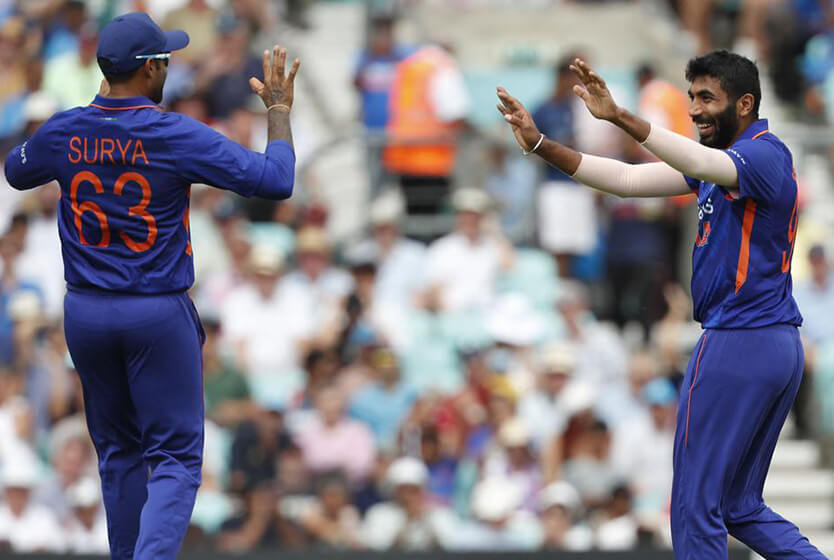
How Important Is Captaincy in Test Cricket?
Babar Azam has come under fire during the ongoing 2nd Test against Australia, with Pakistan on the back foot.
The whispers have begun. We’ve seen it before. It starts as a harmless joke, an offhand comment, and yet with time, more and more people decide to buy into it. It’s the performances, obviously, but as much as many would have you believe, every game is not lost because of poor captaincy.
What is captaincy anyway? Sometimes it’s a ceremonial position awarded for exceptional performances, and other times it holds more power than the country’s prime minister. It could even start as the first and transition into the second mid-career. With a job whose parameters are loose and wide-ranging, how is one possibly supposed to judge it? One man’s yardstick may be different from the others, which defeats the point of having a yardstick in the first place.
Well, obviously, it’s judged on performances, on pseudo-knowledge passed through generations, on jigra, daleri, and other unquantifiables which are adjusted to suit the first point – performances. For a position that is so heavily judged on performances, too often is the team strength sidestepped to either glorify or vilify the captain in question.
Test cricket has been played since 1877; it was probably even played before that, but we still are no closer to discovering the “right” way to captain a Test team. Forget that; we are still unable to agree on whether captaincy means the on-field decisions made between the hours of 10 am and 5:30 pm or other plans and tactics worked up behind the scenes, for you would assume coaches play a role there.
It has been clear in the past few months that the Pakistan cricket team is not run by a dictator. It’s run by a think tank consisting of senior but not necessarily experienced players who formulate plans and approaches for the matches. Babar Azam has stated numerous times in team talks about how difficult it was to form this team core and how important it is for them to stick together. It is heartening to see a Pakistani team that seems to be truly united under one leadership group.
However, it does mean that through no fault of their own, this group may be an echo chamber, with all of them relatively the same ages and brought up in the same cricket culture. It is why even if you were to change the captain to someone else part of the leadership group, you would likely see little change in overall team strategy and approach because the decisions made on the field and even off seem to be collective decisions made after much discussion.
The Australian team is similarly run by a leadership group rather than a dictator. Thus, it made little difference to them when Tim Paine was sidelined. In fact, this leadership group holds enough power to decide who they want as their coach. But it must be noted that the Australian leadership group is significantly more experienced than the Pakistani.
Perhaps Pakistan could benefit from another voice, a dissenting opinion that is different from the echo chamber currently in place. By all means, the players can have the final say, for it is them who will take the field, suffer the losses and revel in the wins but as of now, it looks like the pool of ideas is shallow when it comes to certain situations.
And thus, we return to the initial question – how important is Test captaincy? Well, it has certainly not been very good in this Test match from Pakistan’s side. Ultimately the match may have been already decided by the two phases of play around Tea on the 1st and 3rd day, where one captain decided to turn to spin with the reversing ball while the other brought back his quicks.
All this may be true, but what is also probably true is that no matter who was captain, Pakistan would’ve always introduced spin after Tea. If the man next in line to the mantle comes out in the press conference and vehemently defends the approach, you can bet your bottom dollar that it was a collective decision. It would be difficult to see how a team could willingly bowl 28 overs of negative spin in a row on the whims of one man.
A change in captaincy would be merely a cosmetic decision that would not change the inner workings of the Pakistan side for the better. Rather, it may disrupt the delicate balance that has been struck among the players. In Babar, Pakistan have a young captain who is secure of his place in the side, one who is eager to learn, and one who is respected by his teammates. He may not as of yet be a game controller as the great captains of the past, but he is a leader among men; it’s just that as of now, he has not felt the need to wield the power he has at his disposal. At this delicate point, what Pakistan cricket does not need a scapegoat, especially when that scapegoat happens to be the finest batsman to emerge on the circuit since Miandad.
So Pakistan cricket, for once, show restraint. It is better to sidestep the past than hold court on it and thus dismantle the future. Any discourse should be about how to better the team rather than hold them accountable for their shortcomings. Leadership group or not, the buck will stop at the man with the official designation. No one will deny that the captaincy was flawed, but it is better to allow a man to learn from his mistakes rather than enacting a futile gesture that may set the cat amongst the pigeons.







Leave a Reply